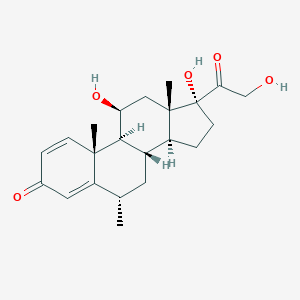Osteoarthritis, Rheumatoid arthritis
Adult: Dosage is individualised according to the size of the joint and severity of the condition. As methylprednisolone acetate: 4-10 mg (small joints); 10-40 mg (medium joints); 20-80 mg (large joints). May be repeated every 1-5 weeks or more depending on patient's response.
Intrabursal
Bursitis
Adult: For treatment of subdeltoid, prepatellar, or olecranon bursitis: As methylprednisolone acetate: 4-30 mg administered directly into the bursae. Repeat administration may not be needed in most cases. Dosage recommendations may vary among countries and individual products (refer to specific product or local treatment guidelines).
Intralesional
Alopecia areata, Discoid lupus erythematosus, Keloid scar
Adult: As methylprednisolone acetate: 20-60 mg administered directly into the lesion. For large lesions, doses of 20-40 mg distributed by repeated inj may be necessary. Usually, 1-4 inj are employed.
Intralesional
Granuloma annulare, Lichen planus, Lichen simplex chronicus, Plaque psoriasis
Adult: For treatment of localised hypertrophic, infiltrated, inflammatory lesions: As methylprednisolone acetate: 20-60 mg administered directly into the lesion. For large lesions, doses of 20-40 mg distributed by repeated inj may be necessary. Usually, 1-4 inj are employed.
Intramuscular
Anti-inflammatory or immunosuppressive
Adult: Dosage is individualised according to the condition being treated and patient's response. As methylprednisolone Na succinate: Initially, 10-500 mg daily. As methylprednisolone acetate: 40-120 mg via deep inj into the gluteal muscle. Dosage recommendations may vary among countries and individual products (refer to specific product or local treatment guidelines).
Intravenous
Acute exacerbations in multiple sclerosis
Adult: As methylprednisolone Na succinate: 1,000 mg daily for 3-5 days via infusion over at least 30 minutes. Dosage recommendations may vary among countries and individual products (refer to specific product or local treatment guidelines).
Intravenous
Acute spinal cord injury
Adult: As methylprednisolone Na succinate: 30 mg/kg via bolus inj over 15 minutes, followed by a 45-minute pause and then give 5.4 mg/kg/hour via infusion. Duration of infusion varies, for treatment initiated within 3 hours of injury, infusion may be given over 23 hours; for treatment initiated within 3-8 hours of injury, may give infusion over 47 hours.
Intravenous
Anti-inflammatory or immunosuppressive
Adult: Dosage is individualised according to the condition being treated and patient's response. As methylprednisolone Na succinate: Initially, 10-500 mg daily via inj or infusion. Administer doses exceeding 250 mg over at least 30 minutes and doses up to 250 mg over at least 5 minutes. Dosage recommendations may vary among countries and individual products (refer to specific product or local treatment guidelines).
Child: For treatment of high dose indications (e.g. haematological, rheumatic, renal, and dermatological conditions): As methylprednisolone Na succinate: 30 mg/kg daily via inj or infusion. Max: 1,000 mg daily. Doses may be given once daily or on alternate days for up to 3 doses. Dosage recommendations may vary among countries and individual products (refer to specific product or local treatment guidelines).
Child: For treatment of high dose indications (e.g. haematological, rheumatic, renal, and dermatological conditions): As methylprednisolone Na succinate: 30 mg/kg daily via inj or infusion. Max: 1,000 mg daily. Doses may be given once daily or on alternate days for up to 3 doses. Dosage recommendations may vary among countries and individual products (refer to specific product or local treatment guidelines).
Intravenous
Graft rejection reactions
Adult: Following transplantation: As methylprednisolone Na succinate: 500-1,000 mg daily via infusion over at least 30 minutes; continue until the patient has stabilised, usually not beyond 48-72 hours. Dosage recommendations may vary among countries and individual products (refer to specific product or local treatment guidelines).
Child: Following transplantation: As methylprednisolone Na succinate: 10-20 mg/kg daily for up to 3 days. Max: 1,000 mg daily.
Child: Following transplantation: As methylprednisolone Na succinate: 10-20 mg/kg daily for up to 3 days. Max: 1,000 mg daily.
Oral
Anti-inflammatory or immunosuppressive
Adult: Dosage is individualised according to the condition being treated and patient's response. Initially, 4-48 mg daily; higher initial doses of up to 100 mg daily or more may be used in acute severe conditions. Dosage recommendations may vary among countries and individual products (refer to specific product or local treatment guidelines).
Child: Dosage is individualised according to the condition being treated and patient's response. Use the lowest effective dose for the shortest possible duration. Treatment recommendations may vary among countries and individual products (refer to specific product or local treatment guidelines).
Child: Dosage is individualised according to the condition being treated and patient's response. Use the lowest effective dose for the shortest possible duration. Treatment recommendations may vary among countries and individual products (refer to specific product or local treatment guidelines).
Topical/Cutaneous
Eczema
Adult: For endogenous eczema, contact eczema, degenerative eczema, dyshidrotic eczema, or atopic dermatitis: As methylprednisolone aceponate 0.1% cream or ointment: Apply thinly onto the affected area once daily for up to 12 weeks. Treatment recommendations may vary among countries and individual products (refer to specific product or local treatment guidelines).
Child: As methylprednisolone aceponate 0.1% cream or ointment: Apply thinly onto the affected area once daily for up to 4 weeks. Treatment recommendations may vary among countries and individual products (refer to specific product or local treatment guidelines).
Child: As methylprednisolone aceponate 0.1% cream or ointment: Apply thinly onto the affected area once daily for up to 4 weeks. Treatment recommendations may vary among countries and individual products (refer to specific product or local treatment guidelines).




 Sign Out
Sign Out




